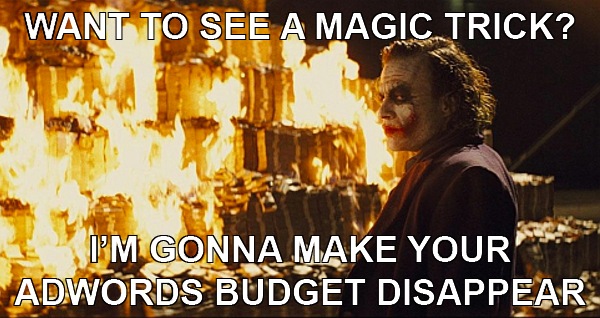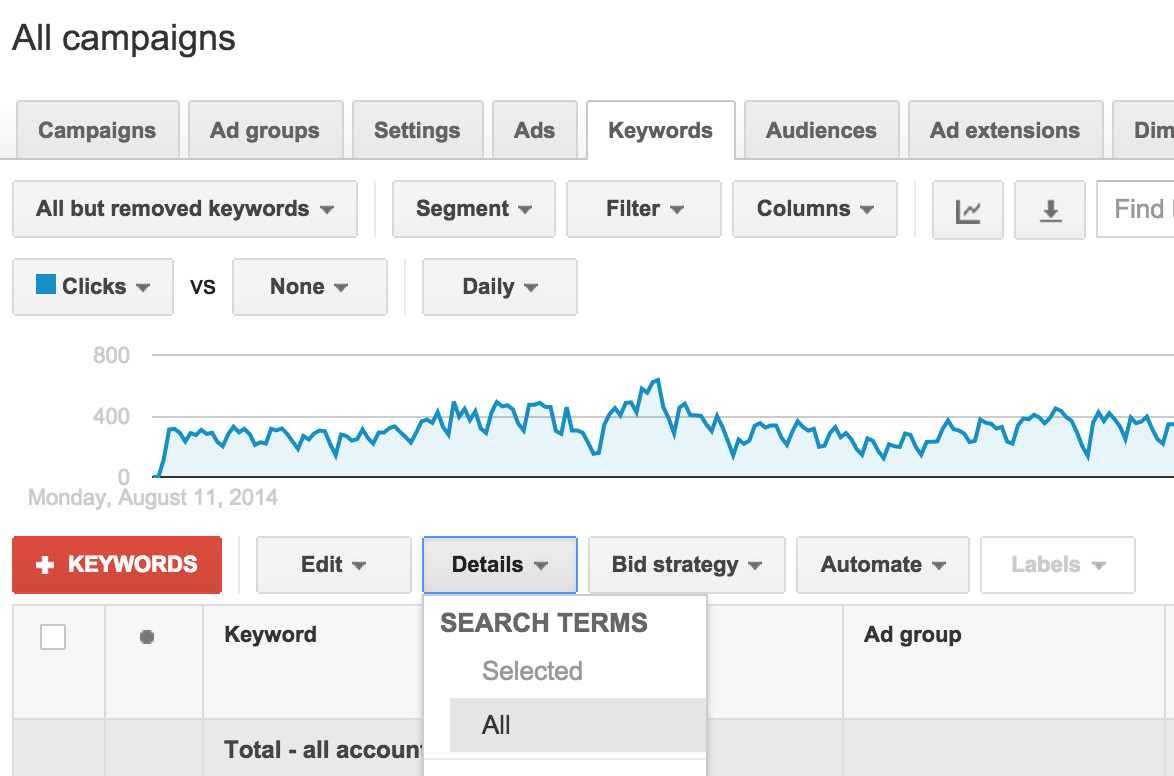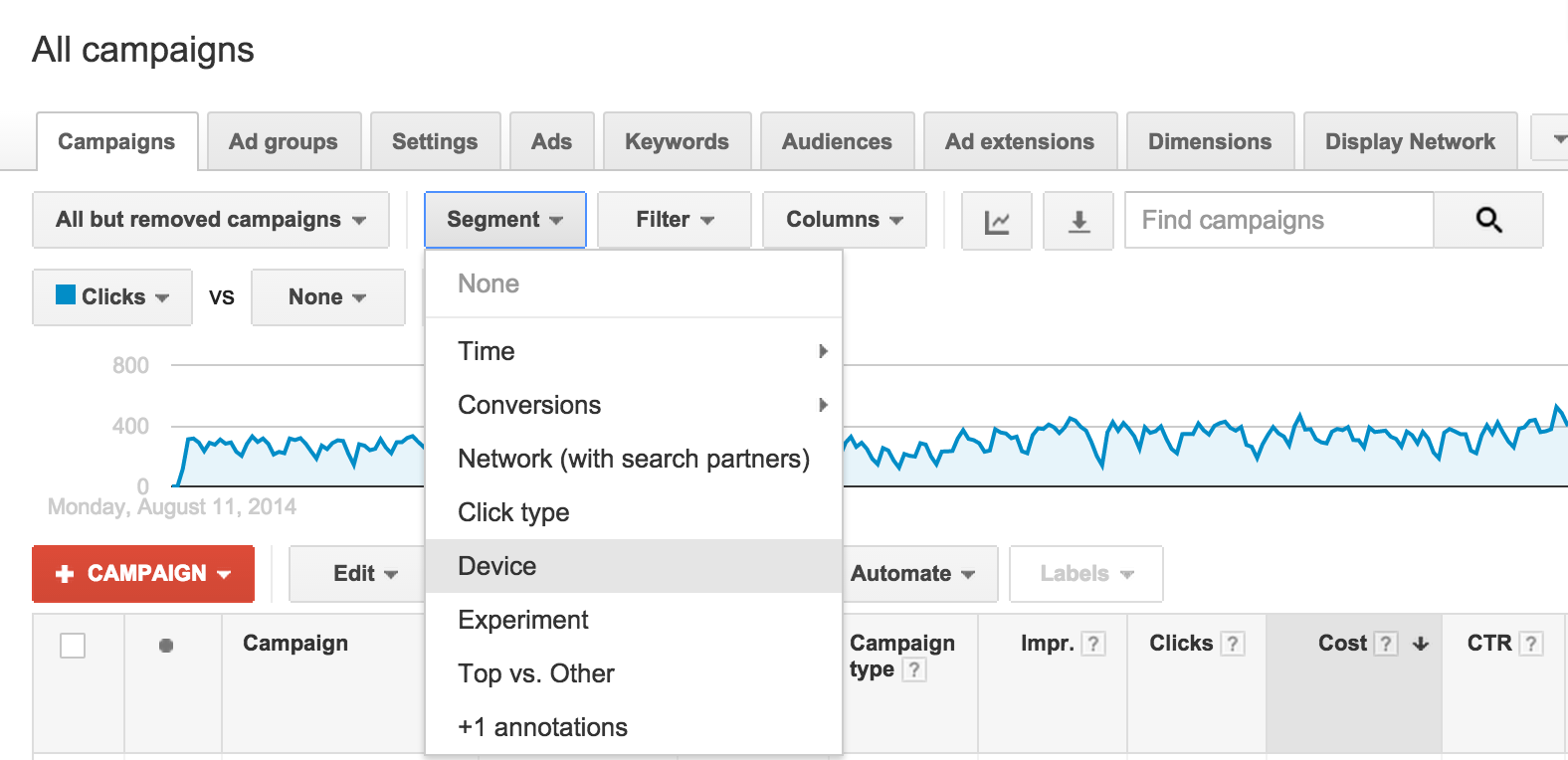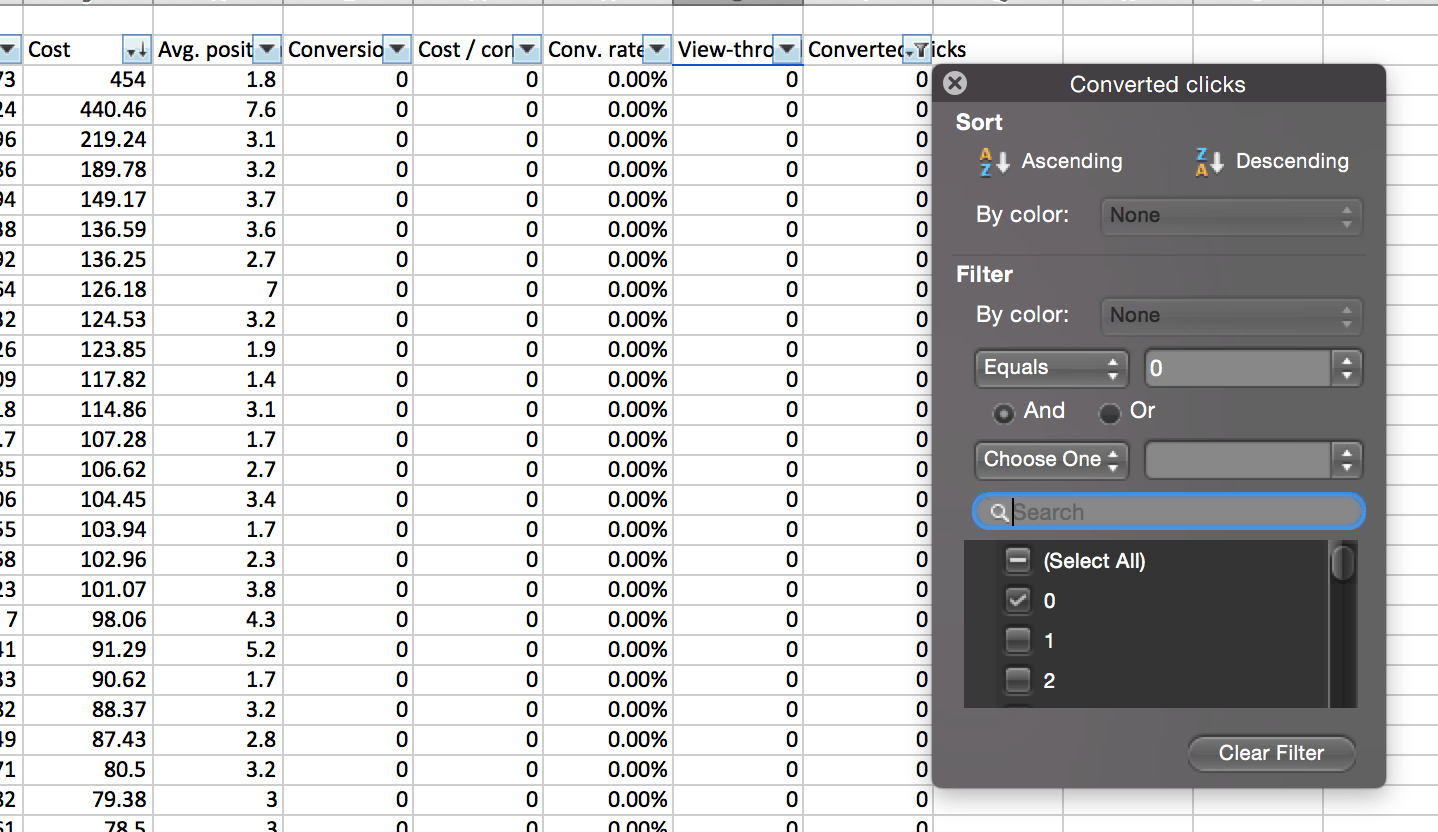How I Saved $50,000 a Month of Ad Spend in 15 Minutes
by Jacob Baadsgaard • June 23, 2015
One of my favorite parts of PPC management is auditing potential client accounts.
While Disruptive is big enough now that my team handles most of the audits these days, I still get a bit of the thrill of the hunt from auditing the occasional campaign myself.
Over the years, I’ve personally audited hundreds of accounts. After seeing so many accounts, it’s become clear to me that most pay-per-click campaigns suffer from the same costly mistakes.
To be fair, a well-run PPC campaign takes a lot of, well, campaign management. Unfortunately, most account managers (whether internal hires or part of an agency) don’t seem to do a whole lot of account management.
I’m not the only one who’s noticed this, either. According to Larry Kim over at Mobile Monkey, in his experience:
- 20% of Adwords account managers don’t touch their campaigns on even a monthly basis
- Only 10% of advertisers consistently work on their accounts every week
- Most agencies only manage their campaigns slightly better than in-house managers
From the smallest budgets to multimillion dollar campaigns, most PPC campaigns are not being managed well. The end result? Mistakes. Expensive mistakes.
Unfortunately, a lot of companies burn a lot of money on bad PPC management. That’s what makes auditing accounts so much fun! I love helping clients see how—with a few well-thought-out changes—they can spend less and get more out of their online advertising.
So, you’re probably wondering, What are these mystical mistakes everyone sacrifices their marketing budgets to?
Sorry, trade secret.
Just kidding. Actually, there are 4 steps to my evaluation process. As a bit of a disclaimer, I’ve been doing this for a long time, so I’ve developed a bit of a sixth sense about these things that speeds up the process significantly. However, even if this is your first time around the PPC managment block, walking through this process should help you get a good feel for how well your campaigns are running.
Case Study
I find it’s easiest to explain things with real-world examples, so I’m going to use one of the campaigns I recently audited as a case study. This campaign is a classic example of the sort of expensive mistakes I find on a regular basis—just a few minutes of effort revealed $50,000 a month in wasted ad spend.
How did I do it? I looked at the right date range and a couple of key campaign health markers. And, as usual, those few hotspots revealed enormous opportunities for improvement.
In this case, the client had been managing their PPC accounts in house for several years. They were generating leads at a decent clip and made a lot of money per sale; however, their cost-per-conversion was so high that they weren’t actually making any money off of their campaigns.
In the hopes of improving things, they had recently increased their budget by 30% only to find that generating more traffic you don’t make money from still doesn’t make you any money.
It was at this point that we started looking at their account. They had the budget and profit margins to succeed at pay-per-click, but something just wasn’t working.
The hunt was on!
1. Look at the Right Data
To start with, you have to make sure that your data is really representative of your campaign. Generally speaking, what happened today, over the weekend, or even over the last month doesn’t really tell you a whole lot.
I find that it’s most helpful to look at the past 90 days or so of account history. This gives you a good picture of the account and how it has been managed while still being current enough to be meaningful.
Why This Matters
To really understand what is going on with an account, you have to be able to see trends. Pay-per-click advertising is nothing if not dynamic, so you can’t assume that results from a small time period like a week are normal.
For example, say you were running the PPC campaign for T.G.I. Friday’s when Rebecca Black’s “Friday” music video went viral. For a week or two, your impression share might have gone through the roof while your click-through-rate crumbled. If you were looking at your data for just that week, it would sure look like you had uncovered a major problem!
On the other hand, if you looked at the last 3 months of results, it would quickly become apparent that something strange was happening. Rather than react to an abnormality, you could identify what was currently happening and exclude the bizarre data from your assessment.
Case Study
In our case study, looking at a 90-day history was immediately helpful because it allowed me to see that the client had recently increased their marketing budget without improving their results. That meant they had fundamental problems with their campaigns that needed to be resolved.
As you can see, over the past 3 months they had spent a lot of money to get about 1 conversion per 500 impressions. At 8 million impressions, that was still a lot of leads; but, since only about 1 in 100 of their leads turned into sales, they were looking at a cost-per-sale of about $2,000.
Ouch! No wonder they weren’t turning a profit.
2. Segment Your Data
With the right date range in hand, it’s time to look at what’s working and what isn’t.
Turns out, there isn’t some magic secret to this. If you’re in AdWords, Google makes it very easy for you to break down your results.
The easiest way to explain this is probably just to show you, so we’ll jump right into our case study.
Case Study
At the time, I was in a bit of a time crunch, but I have two go-to problem areas that I can usually rely on to provide quick insight into where a campaign is bleeding money. So, I took a look at their search terms and device results.
1. Search Terms Report
In the case of this client, their search terms clearly weren’t working out. Unfortunately, this is true for most PPC campaigns, so it’s always a good place to start if you are looking for problems.
To figure out which keywords are non-performers, take your 90-day date range and look at your Search Terms report. I find the easiest way to look at this is to select “All” on the drop-down menu and export the data into Excel. AdWords is great; but, if you want to crunch numbers, you’re better off in Excel.
We’ll get into how to analyze this data in a second.
2. Device Segmentation
Another easy way to identify problem areas in a campaign is to look at how the campaign performs across different device segments. Once again, Google makes this very easy.
This report is a little more high-level, but it often reveals striking differences. The biggest problem I typically see is good click-through-rates on mobile devices associated with poor conversion rates. This usually indicates that the landing page is less-than-optimized for mobile.
It’s often astonishing how much budget can be lost on a bad mobile experience, so this is a great place to find an easy win.
Here’s how this client’s results differed across devices:

To my surprise, this campaign was actually performing better on mobile than on desktop. More importantly, this revelation came as a surprise to the client. Their impression had been that they had been struggling on mobile. Since both segments were performing similarly, it was clear that the biggest problem probably lay with the search terms.
So, it was time to turn to my constant friend and supporter—Excel.
3. Analyze Your Search Query Report with Excel
There’s a reason the word “Excel” sets my heart all a-flutter. Exporting your Search Terms Report to Excel gives you the ability to audit an account almost instantaneously. Instead of hours of headache in AdWords, it’s simply done in Excel.
How? Well, Excel allows you to look at your data using pivot tables. If you’ve never built or used a pivot table before, you can find a great guide here.
With pivot tables, you can filter your data in all sorts of money-saving ways. A pivot table also makes it easy to sort, stratify and sum your findings to create actionable data. What more could a guy ask for?
Don’t tell my wife, but I think I’m in love.
Case Study
For this client, I used one of my old stand-bys: filtering by 0% conversion rate.
If you look at the cost associated with these non-producing results, it quickly becomes clear why I love this technique so much. This screenshot is just a glimpse of the worthless terms this client was paying for—all told, they spent $147,000 on terms that didn’t produce a single lead in just 3 months.
$147,000.
For nothing.
Talk about an opportunity to save some money! By eliminating these terms, we could decrease their cost-per-lead by 42%!
That’s not bad for 15 minutes of work.
4. Verify
As good as your instincts or insights might be, it’s always important to get a second set of eyes on your findings. If it’s your own account, a fresh perspective might be just the thing to catch something you missed. If it’s someone else’s account, there very well might be a good reason for why things are the way they are.
Case Study
Meeting with the client was extremely helpful on this account. Not surprisingly, they were excited about the opportunity I had discovered. As we talked, it became clear that—despite the size of their budget—they didn’t really understand how to manage a PPC campaign. More importantly, they recognized that and the results of my brief audit quickly drove that point home.
In this case, it turned out that my assumptions had been spot on. However, I didn’t know that until I checked with the client. Once they realized the extent of the problem, we had a quick planning session and crafted a strategy for getting their campaigns on track.
Game, set, match!
Conclusion
This situation is far from unique. As I pointed out before, it seems like most pay-per-click campaigns have some major money-sucking flaws that dramatically inhibit their success. Whether it’s due to laziness on the part of the account manager or simple mistakes, performing a quick check-up on a PPC campaign can mean the difference between marketing success and failure.
For me, I often find that starting with the basics—a good search term report and device segmentation—can reveal a lot of fundamental problems with a campaign. Once you’ve tried these go-to’s, there are a lot of other potential money making or saving opportunities most PPC campaigns can benefit from, but I find that good search terms and device segmentation analysis are usually a great place to start.
If you’d like to see what we can find hiding in your accounts, let me know!
You’ve heard my two cents, now I want to hear yours.
Where have you seen major oversights in how PPC campaigns are set up?














